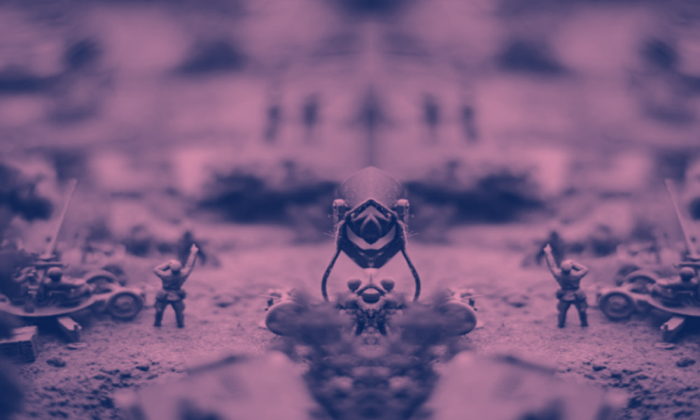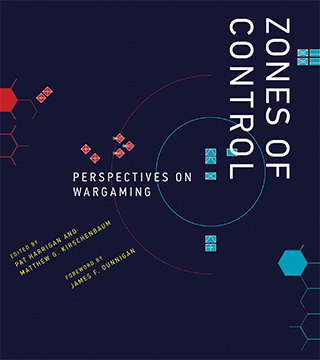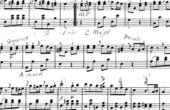What if Wargames Could Be Something Else?

It seems that games have long been a form of conflict simulation. Some of humanity’s oldest games — chess, Go, the Olympic Games — are all ways of modeling and mediating conflict. In contemporary times, computer games were developed right on the very machines used to calculate secret war codes and bombing trajectories. But what if wargames could be something else?

As a kid, I was fascinated with wargames. My cousin was in the U.S. Marine Corps, and when on leave he would describe the wargames that his platoon would play against other platoons and, indeed, against other national militaries from around the world. Call them demos, field exercises, full-scale rehearsals, schemes, maneuvers, simulations, call them costume play in full military getup, these wargames were enacted by troops who meant business. Teams Red and Blue were part of a continuing saga that sounded more exciting than “Star Wars.” Hearing all about such games, I desperately wanted to play too. I pined to track the villains on maps, ferret out perpetrators of espionage, plan sweeps around the periphery, and try my hand at leading the team to a surprise victory with unconventional maneuvers that no one would see coming. I guess that’s what you get if you grow up a gamer and learn of such amazing, all-encompassing play spaces.
We must look to transcend old conflict models, or we risk perpetuating the damaging myth that there are limited ways of resolving conflicts.
I am glad I followed a different path and now make games that have very different aims. But I am still avidly curious about wargaming. I stop by the massive miniatures-ridden battle scenes at GenCon to see tabletop armageddons that would make H. G. Wells envious. I am interested in historical, sci-fi, fantasy, and even hypothetical conflict simulations and have attended wargame role-playing groups and conferences.
I am also engaged in systems design, and surely military simulations are ideal domains for such types of thinking. A few years ago, a friend described the wargames at a nuclear plant, in which she took part as a member of the military. She had to defend the controls at a nuclear reactor while others at her base took on the defense of the layers leading up to this inner sanctum. My friend was stationed on the inside, while the various groups set up their campaign around her. In this scenario, the nuclear reactor was supposed to be under attack by an invading army. The simulation planners did not think to model the situation using lone warrior terrorists, differently trained teams, or individuals with something to prove — instead, the simulation focused on a massive invading army, complete with tanks and even a front line.
Through the course of our conversation it became clear that what was modeled was truly an outdated mode of conflict. The nuclear plant warzone sounded much like the description of the British redcoats lined up in the field during the U.S. Revolutionary War. Rules of engagement change through time, and this example represents a wargame at its “gamey-est” — it didn’t resemble practice for any possible real world event.
The nuclear plant attack scenario makes it clear that whatever we think of wargaming, such games are always tied to highly imagined scenarios and speculative events, and are therefore, at best, powerful fictions. This is their strength, and also the root of their problem.
We are only as brilliant as the tool sets we have; as the old adage goes, if one has a hammer, then every problem looks like a nail. Surgeons, for example, tend to see answers to health problems through the lens of surgery. Likewise, soldiers are trained using wargames. Wargaming is about negotiating power, about systems modeling, about strategy. The scenarios we provide in our games, and the possible outcomes we permit, show us the ways in which we are capable of thinking. Thus, if we train our military primarily on two-sided, violence-based conflict scenarios with one winner, we will tend to frame most conflicts as such, and similarly, we will create circumstances that mirror that training, leading to unresolvable contemporary situations and an out-of-date military.
Indeed, more broadly, through repeated witness to global conflict, military leaders, politicians, and even the public may come to think that armed conflict is an appropriate (and perhaps the only) answer to difficult and seemingly unsolvable problems. For war is what we have seen before in the news, it’s what we read about in our history books, and it turns out it’s what we play in our games.
There are many models for wargames across digital, board game, tabletop, and enacted platforms. I would like to briefly focus on a few that are not easily categorized and perhaps not as well known. For example, there are myriad versions of the classic game of chess. Fans of wargames are perhaps familiar with the “Play It by Trust” piece, an interactive chessboard created by provocateur artist and pacifist Yoko Ono. Since its first 1966 iteration, the “Play It by Trust” series of installations has continued to stimulate provocative conversations about wargaming. The premise of her work is simple. All of the pieces are white, as are all the squares on the board. Instructions for players are slim: We are to play as long as we can remember where our pieces lie. Ono’s all-white chess erases the distinction between sides and asks the player to approach the game in a different manner from a typical antagonistic stance. It is a model for play that lends itself to thoughts about commonalities, not difference. As players reflect on similarities, they are, at least for an instant, part of the whole of humanity; distinctions based on nation-state, race, religion, or language seems to drift away. Perhaps, as Ono’s work suggests, the time for taking “sides” is over.
As players reflect on similarities, they are, at least for an instant, part of the whole of humanity.
Artist Takako Saito exhibited “Liquid Chess/Smell Chess” in 1975. The game was created from a group of scented vials that players had to smell in order to understand which piece was which scent, then make a move. Saito’s scented board game was part of a number of works by Saito and others involved in the Fluxus movement that used multiple senses and emphasized aesthetics and the changeable nature of games, for how long could someone remember a position and a scent?
A quarter-century later, Ruth Catlow developed the digital game “Rethinking Wargames: Three Player Chess,” in response to the Western war against Iraq. Catlow was inspired by street protests in London, in which the “little people,” the people on the streets, were saying no to the war. In her version of chess, Catlow crafted a three-player variant in which one player plays as white royals, a second player plays as black royals, and a third player plays as all of the pawns, both black and white. White and black aim to annihilate each other, but the pawns place themselves at risk and attempt to stop the fighting, or at least slow down the violence, so that negotiation might take place. After five nonviolent rounds, the pawns will have won by reducing retaliatory behavior, thus allowing the battlefield to become overgrown with grasses, masking the checkerboard and effectively stopping war. Catlow’s “Rethinking Wargames” provides an alternative model of a wargame that introduces a new interested party, the pawns, who know they will bear the brunt of any war in terms of military service, economic challenge, and sacrifice. The mechanics in Catlow’s new chess game demonstrate that peace can only come if the “little people” reinvent their role in the peacemaking process, with a balanced effort between all sides.
I make special note of these projects knowing full well that in a volume specifically crafted to document and analyze wargaming, there is the definite risk that you, the reader, might think that these examples aren’t “real wargames” at all. They stand out as almost contradictions to stereotypical notions of war play. But think twice before dismissing these atypical games that may make us, as players, feel uncomfortable — we would be wise to take these alternate styles of simulation very seriously. These are not jokes, nor annoying interferences with “real” models of war. The wargames proposed by Ono, Takako, and Catlow are legitimate conflict resolution models that engage players in new ways and should be studied by the wargaming community for modeling new approaches to old problems.
Alternate wargames express the different ways we might begin to see contemporary global challenges, incorporating different modes of problem solving, aesthetics, and nonviolent conflict resolution. It is possible not only to teach such principles, but also to practice them and enact them in our games, making these principles available and repeatable to a wider audience. Such alternative chess examples may provide perhaps the only real solutions that are humane, civilized, and sustainable.
I have not played many wargames in which players literally stop conflict by having a moving aesthetic experience that changes their worldview. I have not played a wargame in which the public acts as a real player in the game, and surprises the powers-that-be with an effective pacifist move. Our models for wargames need to continue to evolve using unusual, creative solutions to problem solving. For example, perhaps games could model negotiations on urban violence and crime with the highly unorthodox and creative strategies used by Antanas Mockus Šivickas, former mayor of Bogotá, Colombia.
Our models for wargames need to continue to evolve using unusual, creative solutions to problem solving.
In the 1990s, he was able to radically change the city and cut crime. He did so through rather untraditional and effective means: he hired mimes to shame drivers at certain lawless intersections, stirring dramatic prosocial behavior shifts and changing the city through these nonviolent, creative tactical performances. He asked his citizens to pay extra voluntary taxes, and, surprisingly, they did: In 2002, the city collected more than three times the revenue it had in 1990. He distributed 350,000 “thumbs up” and “thumbs down” visual cards that the public could use to peacefully show support or discourage antisocial public behavior.
Such unusual conflict strategies might be a welcome surprise to wargaming culture. Wargaming has been criticized for using mainstream techniques and for having an overwhelmingly white male player base. It has often modeled quintessential notions of power, domination, nationalism, binary truths, and a sense of correctness or self-righteousness in communicating a single story of history to mirror “true” conflict.
We must look to transcend old conflict models, or we risk perpetuating the damaging myth that there are limited ways of resolving conflicts. If games in some way are a practice for the real world, for rehearsing a way of thinking, we are ill-prepared to solve conflicts in creative ways given the current state of the art that wargaming offers.
Are classic wargaming models popular because they simplify the world? Probably. Are they romanticized and distant from the horrors that real warfare brings? Most certainly. I loved the idea of wargames when I was young because planning tactics, outsmarting the enemy, and “destroying them all” is a fantasy that engages us with human history and myth. Such tales have indeed been a part of the human condition, but so have many others. Finding and fostering alternative models for conflict resolution using social norms or aesthetics is a surprisingly difficult challenge. But ultimately, I don’t want to live in a world where there only can be victors lording over the slaughtered, defeated other. I doubt most of us truly do. So how do we find new models?
What will wargames look like with different kinds of rules, with new expectations, with radical strategies and consensus built in? What if their simulation of conflict isn’t so much about war as it is about critical thinking and critique from an outsider status? We know that games can change over time. It is vital that game scholars, makers, and players see these familiar models on a continuum of change, so new play forms that model new solutions to our problems can be invented. Our games are constantly evolving, and this means we all have an opportunity, even a responsibility, to evolve with them and push ourselves to model the world we wish to create.
Mary Flanagan directs the internationally acclaimed game research laboratory Tiltfactor, the theory/practice laboratory she founded in 2003. Her books include “reload: rethinking women + cyberculture,” “re:SKIN,” “Critical Play,” and “Values at Play in Digital Games” with Helen Nissenbaum. Flanagan is the Sherman Fairchild Distinguished Professor in Digital Humanities at Dartmouth College. This article is excerpted from the volume “Zones of Control: Perspectives on Wargaming.”



